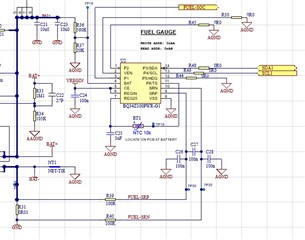Other Parts Discussed in Thread: BQ34Z100
Tool/software:
What are the exact electrical characteristics of pins VEN and P6/TS?
I couldn't find sufficiently detailed information in the data sheet.
- What are electrical properties of VEN? It would be good to know at least the following:
- If it is an open-drain output, how much current it can sink?
- Does it incorporates a current limiting function?
- The pin P6/TS is described as input type in Table 5-1 and also in the functional block diagram (Section 7.2). However, Table 7-21 and description below it give different impression ("However, note that in LED/COM mode 2, pin TS/P6, which has a dual purpose as temperature sense pin, will be driven low except when temperature measurements are made each second." Similarly, Figure 8-4 seams to suggest that in some modes it is used as an output.
- Again, what are electrical properties of the pin TS/P6?
- Is it input only or is it an I/O?
More details please.
Goran



